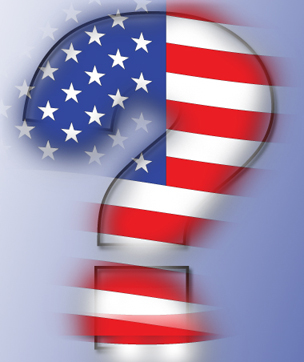An anti-establishment crusader, a dangerous extremist or a sensible person given to outrageous bombast, that new U.S. president-elect has some mining and metals observers in as much of a tizzy as the official commentariat.
Soon after the election result was announced, the World Gold Council cheered as their object of affection passed $1,300, “compared with $1,275 an ounce before the vote counting began.
“We are seeing increasingly fractious politics across the advanced economies and this trend, combined with uncertainty over the aftermath of years of unconventional monetary policies measures, will firmly underpin investment demand for gold in the coming years,” the WGC maintained.
Two days later gold plunged to a five-month low, “hit by a broad selloff in commodities as well as surging bond yields on speculation a splurge of U.S. infrastructure spending could stoke inflation.” At least that was Reuters’ explanation.
GoldSeek presented a range of comments, with Brien Lundin predicting a short rally for gold. GATA’s Chris Powell suggested the metal’s status quo would prevail. “Trump won’t be giving instructions to the Fed and Treasury until January, if he even has any idea by then of the market rigging the government does.”
About a day after that comment, Reuters noted that Trump’s team had been courting big banking bigshot Jamie Dimon of JPMorgan Chase & Co for Treasury secretary.
Powell added that a post-election “great grab for physical gold” might overpower “the paper market antics of the central bank. But geopolitical turmoil hasn’t done much for gold in recent decades and I’d be surprised if that changed any time soon.”
A pre-existing rally pushed copper past $6,000 a tonne on November 11, which Bloomberg (posted in the Globe and Mail) attributed to “Chinese speculators and bets that Donald Trump will pour money into U.S. infrastructure.”
Initial effects of Trump’s 10-year, $10-trillion campaign promise are “unlikely to kick in until the third quarter of 2017 and would in our view have the largest effect on steel, zinc and nickel demand,” Goldman analyst Max Layton told the Financial Times.
The FT also quoted Commerzbank cautioning that “metal prices still appear to be supported by the euphoria exhibited by market participants in the wake of Trump’s election victory, a reaction we find somewhat inexplicable.”
Industrial Minerals called a copper bubble.
Some sources consulted by the journal wondered whether the “pragmatic businessman” would carry out his threatened restrictions to free trade. As for Trump’s climate scepticism and opposition to green energy subsidies, Chris Berry told IM the economic case alone will sustain vehicle electrification and the resulting demand for lithium, cobalt and graphite.
Looking at a more sumptuous form of carbon, Martin Rapaport declared, “The diamond and jewelry trade will benefit as the new policies create a more prosperous middle class and greater numbers of wealthy consumers. Global uncertainty will also increase demand for investment diamonds as a store of wealth.”
But the outsider’s victory might have shocked Rapaport into ambiguity. While saying the election “sets the stage for growth and development,” a preamble to his November 9 press release called the result “positively dangerous.”
Not to be left out of the forecasting frenzy, ResourceClips.com predicts the Yukon tourist industry will add Frederick Trump, the Donald’s bordello-owning granddad, to its romanticized cast of Klondike characters.
Source: http://resourceclips.com/2016/11/11/u-s-election-fosters-forecasting-frenzy/

